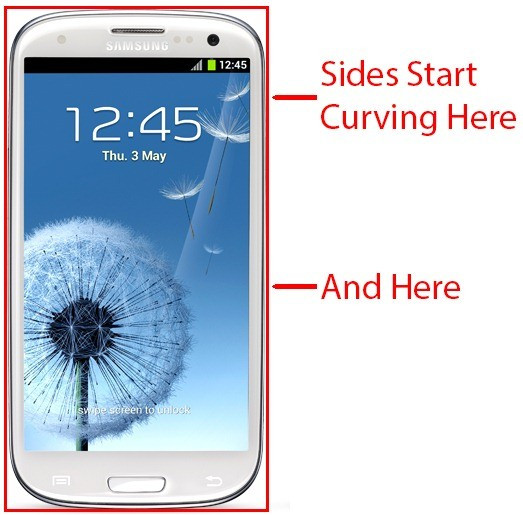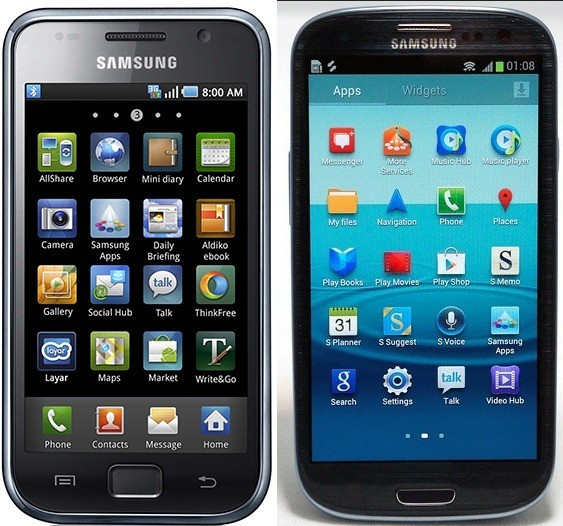Samsung Galaxy S3: Was Smartphone Design Crafted by Lawyers?
- A Synopsis of Galaxy S3's Design Elements and Legal Team's Influence
Samsung's next-gen smartphone - the Galaxy S3 - was unveiled a few days ago and since then the device has been the talk of the town, leading to divided opinions among users worldwide. The S3 was, arguably, the most anticipated smartphone of the year so and coming out as it did, with a number of advanced features, has set the standard for smartphones yet to launch.
However, apart from all the buzz about its features and specifications, there has not been too much glowing talk about the aesthetics and design element of the phone, whether on its own or in comparison to the Galaxy S2. Techies have been rather more absorbed in features like S Voice, Near Field Communications (NFC), Smart Stay and Direct Call they seem to have ignored the poor choice in colours and form factor.
A report on Android Police suggests the smartphone design team surrendered the S3's aesthetic fate to the company's legal team. Apparently, Samsung's legal team is exhausted from battling Apple lawsuits and patent disputes from virtually every country the company has a sizeable market share. The copy-book style design of the S3 might give Samsung's lawyers some respite, while disappointed fans might prefer buying an S2 over the S3.
It all started with the first Galaxy smartphone - the S - which took flak for mimicking the looks of the iPhone 3GS. The S2 followed suit with a string of patent disputes launched by Apple, all relating to allegedly copycat designs. Samsung seems to have learned a lesson. While the iPhone vs Galaxy battle could continue for a long time, Samsung, for now, seems content with legal restrictions on their design team.
We should not forget, by the way, Apple is a premium client for Samsung and shares 25 percent of its profit earnings with the latter on purchased components.
Apple's ownership of the rectangle trademark design or trade dress was established in April last year, when the American company secured claims against Samsung.
The trade dress infringement claims were listed as follows:
- a rectangular product shape with all four corners uniformly rounded;
- the front surface of the product dominated by a screen surface with black borders;
- as to the iPhone and iPod touch products, substantial black borders above and below the screen having roughly equal width and narrower black borders on either side of the screen having roughly equal width;
- as to the iPad product, substantial black borders on all sides being roughly equal in width;
- a metallic surround framing the perimeter of the top surface;
- a display of a grid of colourful square icons with uniformly rounded corners; and
- a bottom row of square icons (the "Springboard") set off from the other icons and that do not change as the other pages of the user interface are viewed.
What Did Samsung Do to Dodge Apple's Lawsuits?

The Galaxy S3 gets exaggerated curves at both top and bottom corners, while the curving process for the bottom corners begins at about one-third of the way down... resembling an amorphous blob. So, it's neither a rectangle nor a rounded rectangle and that's one less concern for the legal team.

Moving on to point two: colours and borders; since black is out of question, we get a choice of white and dark blue for the new Galaxy S3.

Besides, the top bezel is about 16 percent smaller than the bottom, which negates Apple's claim number three.

Finally, the colourful square grid backgrounds around icons have been dropped for both the Galaxy S2 and S3, while the original Galaxy S still carries them.
According to Android Police, despite the chopping and changing, Samsung reportedly couldn't resist the metallic band around the edge of S3, which could become the only reason for infringement. Apple cannot claim ownership for a standalone entity but rather a combination of them. That means, Samsung is out of trouble for now, while Apple might work out a new patent to keep the lawyers busy after all.
© Copyright IBTimes 2025. All rights reserved.






















